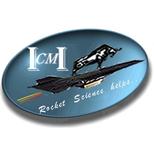It seems that the title Rise of the Machines of the famous 2003 Terminator movie was not just a clever slogan after all. The rise of the machines is now a reality in the stock market and I believe value investors should be cautious.
High-frequency trading (also known as high-speed trading) can cause a lot of trouble for individual investors, as I see it. High-frequency trading focuses on trading, rather than investing, and causes volatility, which can create far more opportunities. Unfortunately, it appears that most of the time, these opportunities are for the machines.
Some of the automated systems currently in use are trading two, three or even five times as many shares as they would have in a more normalized volatility environment.
High-frequency trading is a technique that relies on the rapid and automated placement of orders, certain of which are immediately updated or canceled as part of strategies such as market making, statistical arbitrage and other tactics based on momentum.
According to Tabb Group, in 2006 high-frequency trading accounted for 26% of market activity. By the beginning of 2011, it was already at 53%, and I believe that number to be much larger today.
Wedbush estimated that high-frequency firms made up 75 percent of American equity trading by the end of 2011. From August 4 through August 10, 2011 a five-day record was established, according to data compiled by Bloomberg and Credit Suisse Group AG. The daily average of 15.97 billion shares beat the previous record of 15.94 billion established on September 15 through September 19, 2008, one of the highest volatility periods in the stock market, after Lehman Brothers filed for bankruptcy.
Profits from high-speed trading in American stocks were on track to be $1.25 billion in 2012 according to the New York Times, although the practice may be cooling down as drops in overall volume have made it harder to make profits for traders who quickly buy and sell shares offered by slower traders.
I still believe though that high-speed trading has the power to manipulate the market, including the stocks of those large caps that we believed in the past were impervious to these market swings.
According to CNBC, a single mysterious computer program that placed orders and then subsequently canceled them made up 4 percent of all quote traffic in the U.S. stock market during the week of October 1, 2012. The program placed orders in 25 millisecond bursts involving approximately 500 stocks, CNBC reported. The algorithm never executed a single trade, and it abruptly ended at about 10:30 am ET on Friday October 5th.
Frequently these anomalies are discovered by trading detectors placed by firms such as Nanex, the number one detector of trading anomalies watching Wall Street today.
A blog post from Zero Hedge suggests that a deliberate share dump in the final seconds of trading on Friday January 25, 2013 may have been partly responsible for yet another drop in Apple’s (AAPL) share price.
Zero Hedge cites several Nanex charts as evidence, observing that some 800,000 shares worth $350 million were traded in the final seconds of trading that Friday. Machines are fearless and frequently they do things that will scare investors, deliberately dropping prices and buying again when the stocks are down.
I haven’t sold any of my Apple shares in my Covestor Dividend Paying Large Caps model, despite of the stock’s drop in value. When I bought the shares, I knew what I was buying and believe that I paid a reasonable price for it. I’m not playing the high-speed trading game, as some other value investors are these days.
As an individual investor, you shouldn’t worry about high-speed trading. Value investors typically buy and hold over longer periods, reducing transaction costs dramatically. This practice is called “producing alpha”, where the goal is to produce good total returns after transaction costs (commissions + fees + market impact). High-speed traders subtract transaction costs in their models, to avoid fooling themselves. A typical percentage used for this practice is around 0.5%, according to Forbes.
I believe safety, security, and stability in markets will ultimately prevail. I have seven rules guiding my investment philosophy. The challenges facing high-speed focused firms are many in my opinion, the biggest one being the drop in trading volume on stock markets around the world in each of the last four years.
Additionally, there are traditional investors like mutual fund managers that have adopted the high-speed industry’s automated strategies, while moving some of their business away from the exchanges that are popular with high-speed traders. Meanwhile, the technological cost of shaving further milliseconds off trade times has become a huge drain on many companies.
I believe high-frequency trading represents a threat for the stock market. The good news is that many solutions may be implemented to reduce the impact and risks associated with high-speed trading.
One of the solutions may be a financial transaction tax (FTT), which could remove the juice from this practice according to Forbes magazine. The second solution may be a “Kill Switch,” an order and position limit that could halt bad trading immediately and at multiple levels. Last but not least, the government could step in and enforce some regulations through the SEC.
There are some strong leaders trying to understand the effects of high-speed trading in the stock market and they should be heard more broadly. As David H. Bailey, Director of the Center of Innovative Financial Technology said:
“The recent explosion in ever-more-sophisticated automated trading programs has injected a new and little-understood element of instability into the world of finance and investment, which begs to be better understood. The high-performance computing and financial mathematics communities have much to offer here.”
My final message for value investors this month is, invest with caution and be wary of the machines. I know it sounds like something out a Matrix movie, but ultimately you decide whether you take the blue or the red pill.



